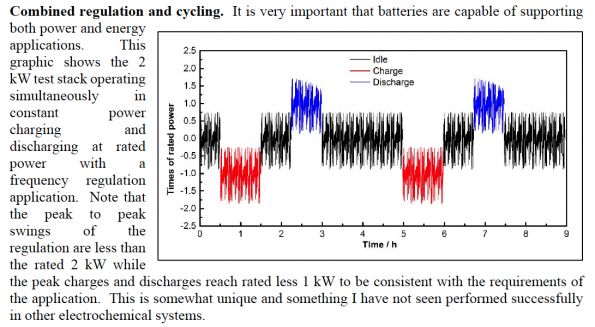Flow battery builder UniEnergy Technologies (UET) has "turned over the keys" to Avista Utilities for the largest capacity flow battery in North America or the EU, according to Russ Weed, VP at UET. The system was officially commissioned on Wednesday, and it now belongs to the utility.
It's a 1-megawatt, 4-megawatt-hour vanadium redox flow battery sited at the Turner Substation in Pullman, Wash. to support Washington State University’s smart campus operations.
Weed stressed, "It's not a pilot -- it's a grid asset."
The flow battery will be used by Avista Utilities for load shifting, frequency regulation, and voltage regulation on the Turner distribution circuit. The UET product will also support Avista's end customer, manufacturer Schweitzer Engineering Laboratories (SEL), offering uninterruptible power supply, black start, and four-cycle ride-through. SEL is a builder of protective relays and grid equipment.
Flow batteries -- energy storage systems that pump electrolyte through stacks of electrochemical cells -- are one of the few battery formats that hold promise for affordably storing energy for multiple hours at a time.
Jeff St. John has reported, "Vanadium redox flow batteries are one of the most promising chemistries, because of vanadium’s ability to maintain different states of charge as a standalone element, unlike other chemistries like zinc-bromine or iron-chromium. But getting these efficiency advantages from theoretical to real-world working model status has taken years of effort -- and some significant changes along the way."
St. John adds, "In particular, the Department of Energy’s Pacific Northwest National Laboratory (PNNL) has in recent years developed a new vanadium electrolyte, one with the promise of increasing energy storage capacity by 70 percent from previous versions. The new electrolyte can also increase the operating temperatures of the batteries they’re used in, giving them more power delivery punch, as well as a potentially longer lifespan. So far, three companies have licensed this PNNL technology," according to Weed. The first is Imergy, the Fremont, Calif.-based startup formerly known as Deeya, which switched from iron-chrome to vanadium flow battery technology last year. The second is WattJoule, a Massachusetts-based startup."
"The third is UniEnergy, which was founded in 2012 and has raised more than $20 million from private investors. One of UniEnergy’s investors, China's Bolong Industrial Investment, is also an investor in Rongke Power, a Chinese company that’s been making vanadium flow batteries for the past eight years, using an older type of electrolyte."
In a previous interview, Weed said that a typical installation will cost “somewhere between, let’s say, $700 and $800 per kilowatt-hour,” a figure that includes all the components needed to interconnect with the grid. “When we scale up to where we’re going, we’re going to be $500 per kilowatt-hour, all in,” he said. That cost is quite competitive with other flow batteries on the market today, though it’s being challenged on the low end by startups like Imergy, which is aiming to deliver its vanadium redox flow batteries at $500 per kilowatt-hour with its current systems, and drop that to $300 per kilowatt-hour by using recycled vanadium for its electrolyte, among other improvements.
Heather Rosentrater, Avista's director of engineering and grid innovation, said that the UET battery "can use 100 percent of its state-of-charge, with unlimited cycles and a 20-year life. We want the battery to be 100 percent flexible to operate at all times, providing as many simultaneous value streams as possible."
UET claims that its "third-generation" system "is differentiated by 1) an electrolyte with double the energy density, much broader temperature range, and 100 percent recyclability, 2) a plug-and-play ISO containerized design with a compact footprint, [and] 3) proven, high-performance large-scale stacks with eight years of field deployment, six years of R&D before then, and hundreds [of units] deployed."
For years, energy storage technology vendors have claimed the ability to perform time-shifting (an energy application) at the same time as frequency regulation (a power use case). Weed said. “We can do peak shaving (or time shifting)...and frequency regulation concurrently,” he noted. “We have test results proving we can do it.”
Figure: Test Results Show the UET Battery Supporting Power and Energy Applications

Weed said that the company's battery works well in a microgrid, in commercial and industrial applications, and in utility applications. He added, "And we love this site, because it's all three."



